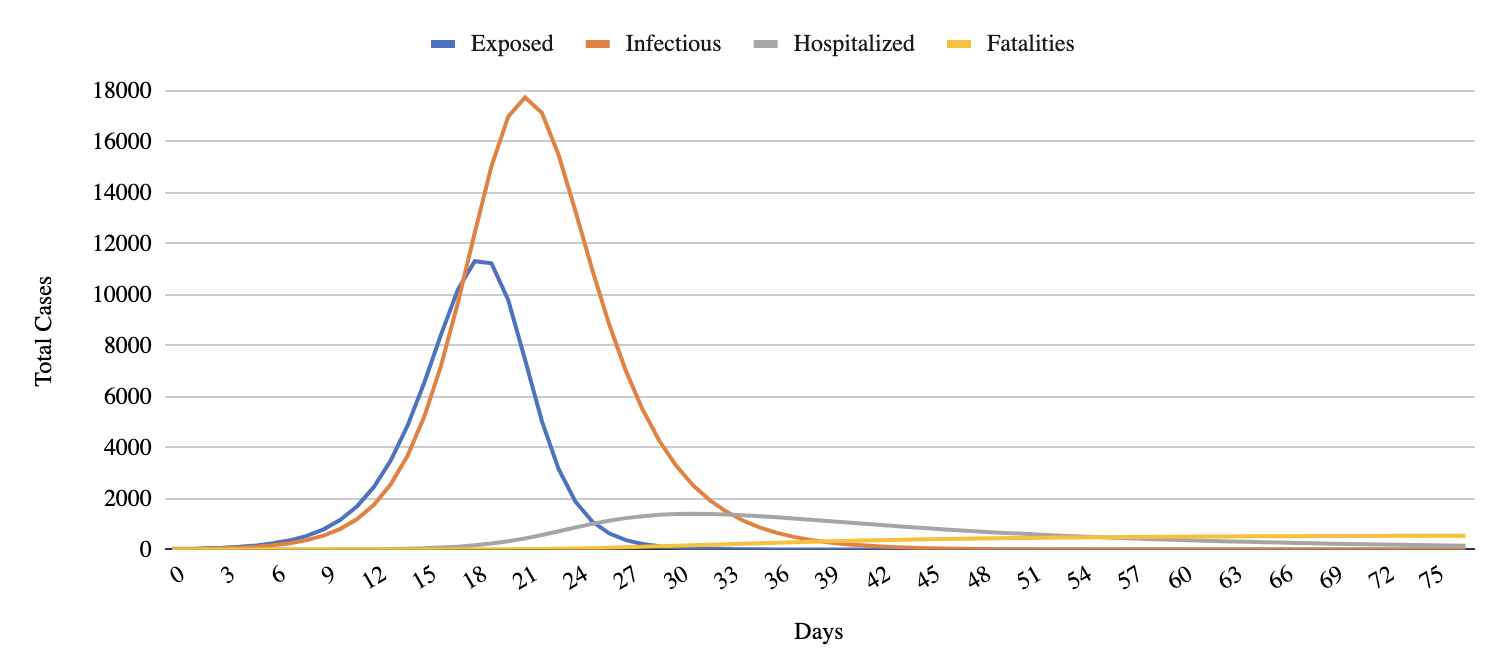Arizona has the fifth highest imprisonment rate in the country, with nearly 42,000 people incarcerated in the state’s prison system and thousands of additional staff who work in these facilities daily. In the current coronavirus pandemic, incarcerated people and those who work at correctional facilities are particularly vulnerable given the crowded and unsanitary conditions that exist in jails and prisons.
Data Shows COVID-19 in Arizona Prisons is a Public Health Crisis
New data shows that without population reductions, approximately 41,000 incarcerated people and 3,100 staff in Arizona correctional facilities will get COVID-19.
The number of individuals incarcerated in Arizona who have tested positive for COVID-19 is rapidly growing. In less than a week, the number of incarcerated people in ADCRR custody who have tested positive for COVID-19 has more than doubled, increasing from 10 to 25. There are also at least 20 prison staff who have tested positive for coronavirus. Due to limited supplies and lack of testing across the state, it is likely that the actual number of cases among incarcerated individuals and facility staff is much higher.
To project the potential impact that COVID-19 could have on Arizona’s prison population and hospital usage, FWD.us used the COVID-19 Model for Incarceration created by Recidiviz, Inc., and customized it with Arizona-specific data (please see “Methodology” for more details).
This model estimates that without population reductions and more protective measures within prisons, COVID-19 will peak in Arizona’s prisons in about a month. In three weeks, approximately 41,000 incarcerated people and 3,100 staff will have the virus. At the hospitalization peak in one month, at least 1,400 incarcerated people will be hospitalized, utilizing 12.6% of Arizona’s total hospital bed capacity. Over its course, and without action, the virus is projected to kill 360 individuals incarcerated in Arizona prisons, three times as many people as are currently on Arizona’s death row.
These are grim numbers. But according to the model, it is not too late to save lives. If Governor Ducey released 10,000 individuals in the next week, or about one-quarter of the state prison population, the number of projected deaths and hospitalizations would be reduced by 24%. Arizona’s prison healthcare provider has identified a population of approximately 6,600 incarcerated people who are most vulnerable to COVID-19 based on their age and underlying health conditions. Focusing releases on these people who are elderly or medically most vulnerable would most effectively reduce the number of hospitalizations and deaths.
“Over its course, and without action, the virus is projected to kill 360 individuals incarcerated in Arizona prisons, three times as many people as are currently on Arizona’s death row.”
Methodology
In order to estimate the projected impact of COVID-19 on incarcerated populations, the Recidiviz COVID-19 Model for Incarceration uses incarceration-specific measures of how COVID-19 would spread within a prison or jail, along with state data on incarcerated populations and community resources to generate a likely estimate of total future COVID-19 cases in the incarcerated population, and related hospitalization use and deaths. This model is similar to models being used to estimate total hospitalizations and deaths across the state and country, but recognizes that social distancing is not possible within prisons and jails, and that many individuals in prisons and jails are at particular risk from this disease.
FWD.us used the April 16, 2020 release of the model and entered inputs for Arizona based on current publicly available data, including the current number of confirmed cases in the state, within the state prison population, and among facility staff, as well as the age breakdown of the state prison population, housing density (90 percent of individuals in Arizona prisons are housed in dorm-style accommodations which greatly increases the rate of spread of the virus), and percentage of capacity used in state prison facilities. FWD.us also included updated data on hospital capacity in the state based on current reported capacity.
FWD.us also updated the hospitalization rate used in the model. While Recidiviz included the mid-range estimate of hospitalizations per confirmed case in the United States, given current limitations in testing capacity, we felt the denominator (total number of cases) might be underestimated and the total rate therefore overestimated. Instead, we used an estimated hospitalization rate of 5%, based on an Imperial College of London paper that included an age-adjusted estimate of hospitalizations per total (including unobserved) hospitalizations. This should be seen as a lower bound for hospital bed use by people in the state prison population.


 Projection of the impact that COVID-19 could have on Arizona’s prison population and hospital usage
Projection of the impact that COVID-19 could have on Arizona’s prison population and hospital usage